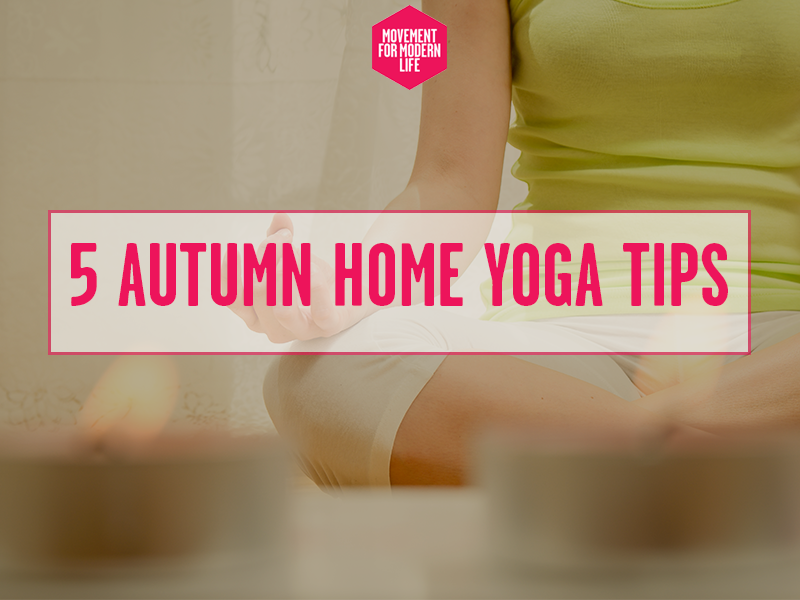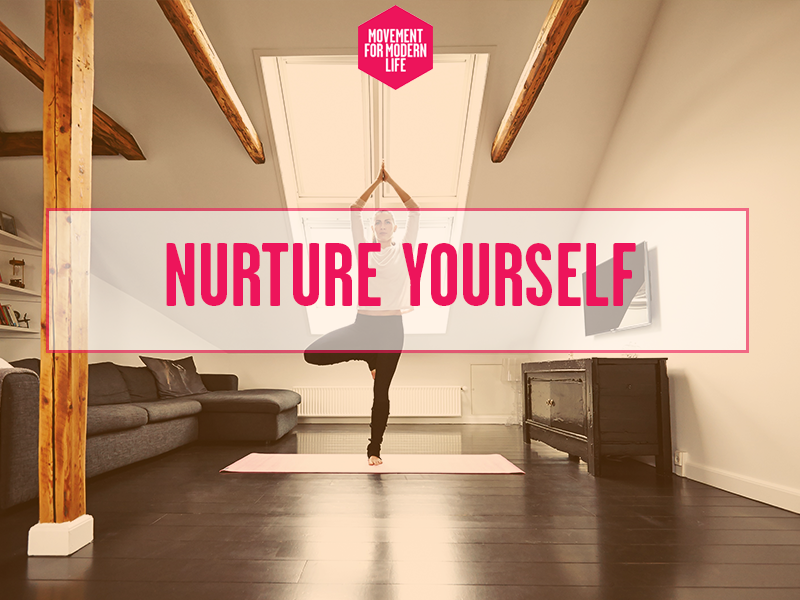Read all about Autumn Home Yoga Tips from our lovely teacher, Lizzie Reumont…
As the warmer weather of the mild autumn transitions to colder, shorter days, the leaves turn colour and fall from the trees in preparation for the winter hibernation period. It is an important reminder that all around us is change, and in the midst of change, slowing down to restore and rebuild is a part of the natural cycle of life. The body and the mind are constantly processing external, and internal factors, and in today’s world where the pace is fast and the expectations are high to “keep calm and carry on”, we often forget or edit out the steps involved at maintaining calmness.
During the darker months, the mind can tell the body it doesn’t want to move quite so much, or venture out doors. While it is important to listen to the natural instinct we have to hibernate, the mind can be clever, manipulative and deceiving. Delving into why we may be avoiding the practice is an important aspect of listening to the body’s needs. During the colder months while the mind may feel lethargic or lazy, it is even more important to move the body and stay disciplined with a movement-based practice. The body benefits immensely by creating some inner fire and lubricating the joints, and it is just important, if not more so, for the mind to have a physical experience to bring it back into the body. Darker days can lead to reduced energy and even depression, which is thwarted by increasing the oxygen flow to the brain, stimulating the hormone centres such as the pituitary, pineal and thymus glands, and giving the mind a purposeful focus such as completing an asana practice.
The change in season can be a wonderful time to change up your yoga practice by trying out a new teacher, method, or simply re-focusing the your intention. Here are five tips that may help to renew your perspective in the midst of seasonal change.
1. Listen to your body, but challenge your mind.
The mind is very clever, and at its first chance it may jeopardise your practice time or space. Even when in doubt, create a tiny space for a limited practice. Drop the expectation of having to do a long or challenging class, and be satisfied with doing something rather than nothing.
2. Be honest with yourself.
When you aren’t making it onto the mat because you feel too tired or think you may be too busy with other commitments, see if you can travel beyond these excuses to make a space in your day. Similarly, when you notice your mind starting to wander while you are on the mat or struggle to get into certain poses, see if you can re-centre your focus on doing something for the body that is beneficial, beyond squeezing yourself into a position that is a misaligned shape you are making with the body. Do less, well, rather than doing more in an unfocused way.
3. Make the commitment.
Once you have started a practice, commit to a specific amount of time or a specific class. Starting a practice and then quitting half way through is a slippery slope. Be realistic with the time you are willing to commit, and if you are trying out a new teacher or new style, try to make a commitment in the first five minutes or so. If you don’t enjoy the first few minutes, you still have time to change approach.
4. Just show up.
Whether it is 10 minutes or ninety minutes, be present for the duration. The most important part of a class can be the moment you recognise you are not paying attention; that is the moment you can refocus and slow down to get back into the body rather than simply following a teachers instruction blindly without honouring your own body, it’s limitation and potential.
5. Nurture yourself.
Be present to how you are fuelling the body and mind. The quality and nutrients we put into the body are as important as the thoughts we allow into the mind. Eating an organic, plant-based diet that is prepared without harming any other being and with love is as important to fuelling our yoga practice as is healing, positive intention. This means learning to listen to the body’s needs and how to translate that into healthy, healing foods.
Happy Autumn, happy yoga.







Leave a Reply